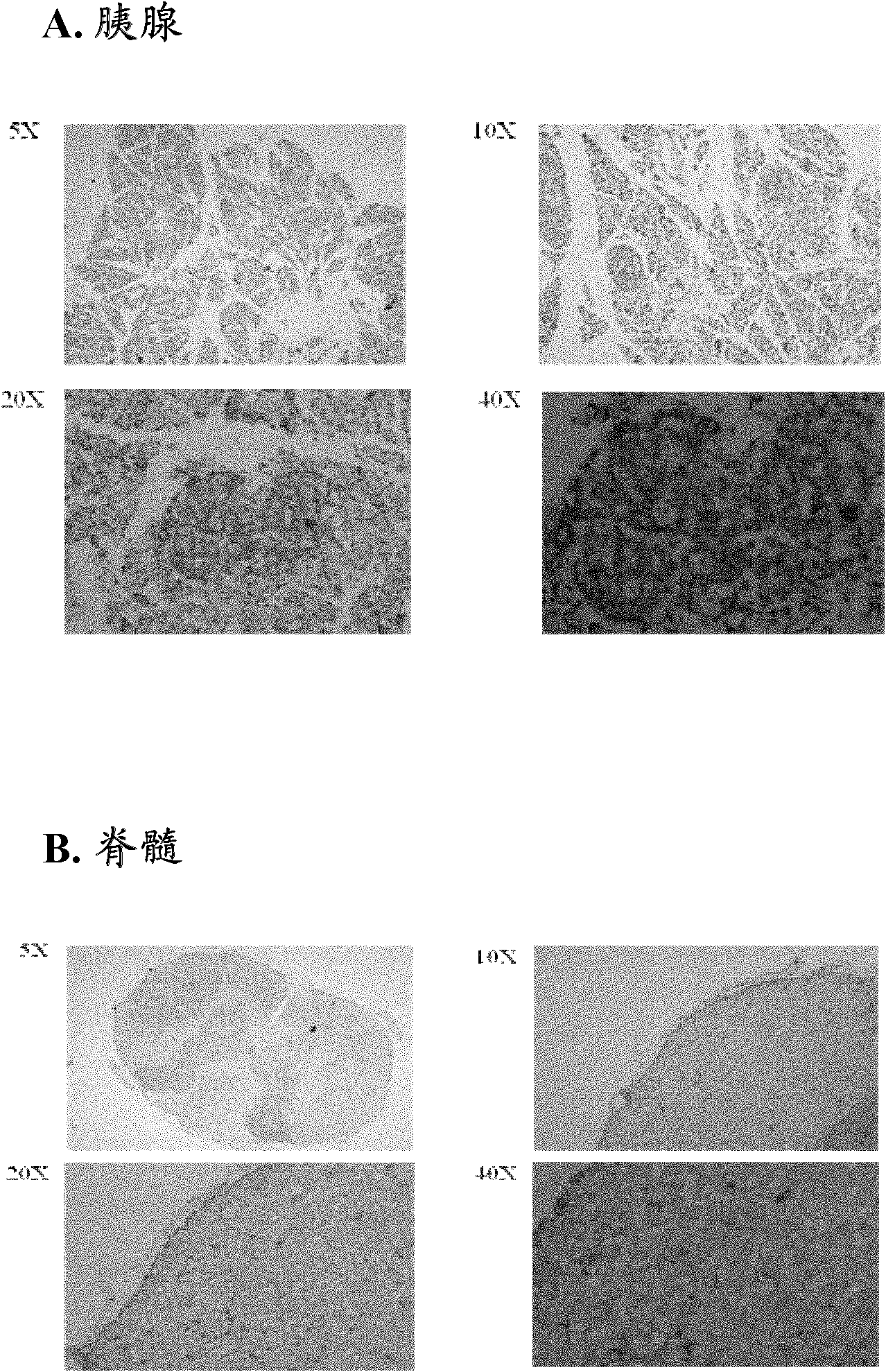GLP-1 acceptor agonists used for treating pains
A GLP-1, receptor agonist technology, applied in the direction of anti-inflammatory agents, non-central analgesics, medical preparations containing active ingredients, etc., can solve the problem of inability to produce analgesic effect, reduce glucagon secretion, The molecular mechanism is not clear, etc.
- Summary
- Abstract
- Description
- Claims
- Application Information
AI Technical Summary
Problems solved by technology
Method used
Image
Examples
Embodiment Embodiment 1
[0066] The present invention will be further illustrated by the following examples, which should not be interpreted as limiting the protection scope of the present invention in any way. The entire contents of all cited references in this application, including article references, issued patents, published patent applications, and co-pending patent applications, are expressly incorporated herein by reference. In the following examples, unless otherwise specified, the reagents and materials used are commercially available at least analytically pure or equivalent products. EXAMPLES Example 1 Expression of rat spinal cord GLP-1 receptor (GLP-1 receptor) mRNA
[0067] Male Wistar rats (Shanghai Slack Experimental Animal Co., Ltd.) were anesthetized with sodium pentobarbital (60 mg / kg) (Sigma, Shanghai, China), exposed their chest cavity, and perfused the heart with normal saline until the blood flowed out of the whole body. Afterwards, rat pancreas, skeletal muscle, ganglion, spin...
Embodiment 2
[0068] GLP-1 receptor gene expression According to 100 mg of tissue, 1 ml of Trizol reagent (Invitrogen, Shanghai, China) was added, and a corresponding volume of Trizol reagent was added. The quality of the extracted RNA was determined according to OD260 / OD280 and nucleic acid electrophoresis. Using reverse transcriptase (Toyobo, Toyobo (Shanghai) Biotechnology Co., Ltd.), according to the manufacturer's instructions, 1 μg of total RNA was reverse-transcribed into cDNA under the corresponding reverse transcription conditions. Using the cDNA produced by reverse transcription as a template and GAPDH as an internal reference, the expression of the target gene GLP-1 receptor in various parts of the rat was detected by fluorescent quantitative PCR (Mastercycler ep realplex real-time PCR system, Eppendorf, Hamburg, Germany). -ΔΔCt method to analyze the expression changes of the target gene GLP-1 receptor. The experimental results of 3 rats are as follows: figure 1 As shown, the p...
Embodiment 4
[0071] Behavioral observations showed that administration of GLP-1 receptor agonists such as GLP-1(7-36), exenatide, geniposide, geniposide, and genipin had no obvious behavioral changes such as sedation, shaking, paralysis, and irritation , increased activity, indicating that the analgesic effect of GLP-1 receptor agonists on pain is not due to its non-specific sedative effect or impairment of motor coordination. Example 4 Inhibitory effect of spinal cord injection of GLP-1 receptor peptide agonist exenatide on bone cancer pain model and neurogenic pain model in rats
[0072] Female Sprague Dawley rats (150-180g, Shanghai Slack Experimental Animal Co., Ltd.) were anesthetized with sodium pentobarbital (50mg / kg, i.p.), drilled a hole 0.5cm below the tibial head, and injected 5μl rat Walker 256 cell suspension (1×10 7 cells / ml, Cell Resource Center, Shanghai Institute of Biological Sciences, Chinese Academy of Sciences) into the bone marrow cavity. On the 14th day after the o...
PUM
| Property | Measurement | Unit |
|---|---|---|
| Maximum inhibition rate | aaaaa | aaaaa |
Abstract
Description
Claims
Application Information
 Login to View More
Login to View More - R&D
- Intellectual Property
- Life Sciences
- Materials
- Tech Scout
- Unparalleled Data Quality
- Higher Quality Content
- 60% Fewer Hallucinations
Browse by: Latest US Patents, China's latest patents, Technical Efficacy Thesaurus, Application Domain, Technology Topic, Popular Technical Reports.
© 2025 PatSnap. All rights reserved.Legal|Privacy policy|Modern Slavery Act Transparency Statement|Sitemap|About US| Contact US: help@patsnap.com



